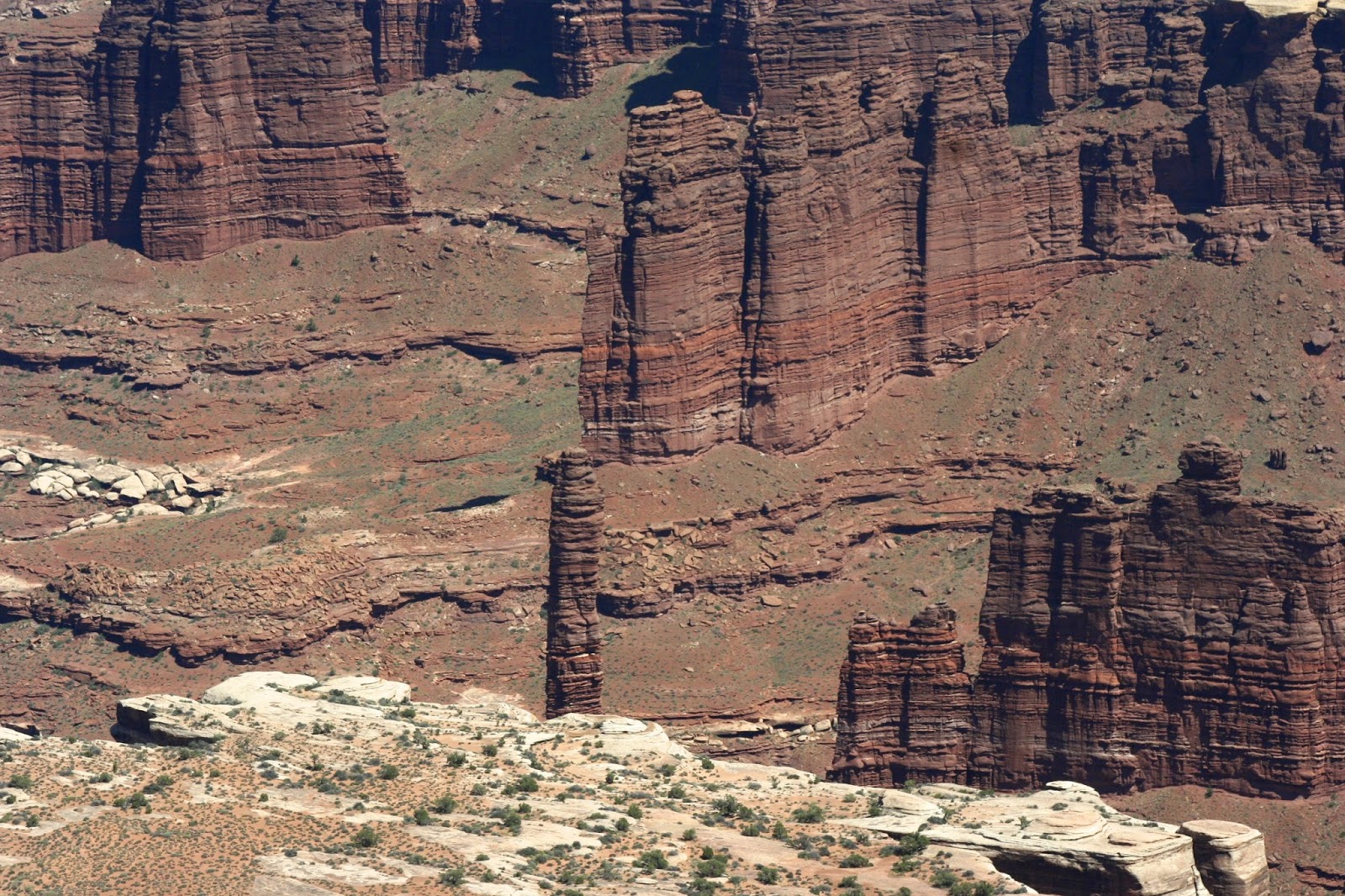UTAH NATIONAL PARKS
On June 3rd I left Tucson and headed north. Drove up through Monument Valley which has some amazing rock formations that were all formed by weather.
I continued on to Natural Bridges National Monument - there are three "natural bridges" which have been created again by weather.
The next day was on to Canyonlands NP which is large and accessed from the south and the north. I started with the south one where the most famous "rocks" are called needles.
Found the dead trees fascinating -
Wildflowers were everywhere:
 |
| Orange Globe Mallow |
 |
| Prickly Pear |
 |
| Common Raven were everywhere |
 |
| Bush Senecio |
 |
| Another type of Prickly Pear |
That afternoon I drove to the north visitor center -
 Stayed in Moab over night and the next morning was at Arches NP determined to hike to Delicate Arch which is on the Utah license plates.
Stayed in Moab over night and the next morning was at Arches NP determined to hike to Delicate Arch which is on the Utah license plates. |
| Delicate Arch - you could see snow on the mountains in the distance |
 |
| There are 2000+ arches in the National Park |
 |
| Park Avenue
Two down - off to Capital Reef NP - each one was spectacular in its own way --
|
I was making good time so decided to go back to Bryce NP - hit it when the light was nearly perfect.
 |
| Pronghorn grazing in the field |
 |
| Hoodos at Red Canyon National Forest So the last of the big five is Zion NP |
 |
| There were seven Big Horn Sheep grazing - females and teenagers |
All in all, a great trip - am so glad I finally got to do it.

.jpg)



























